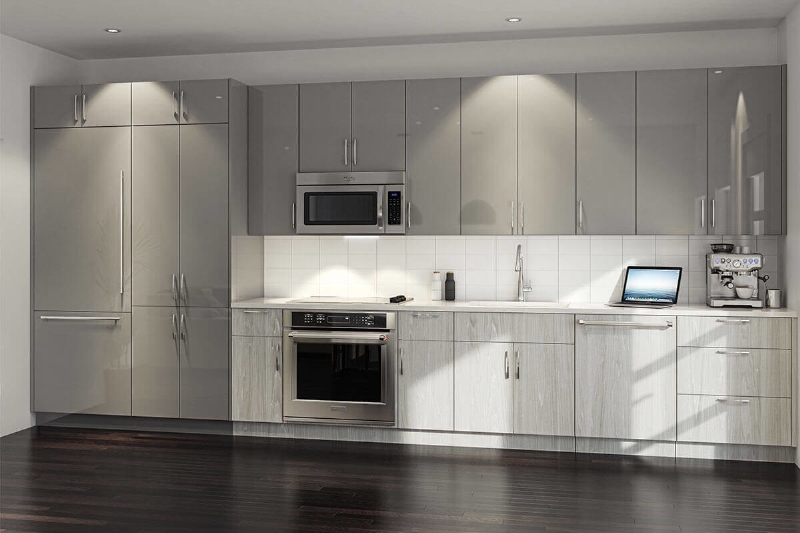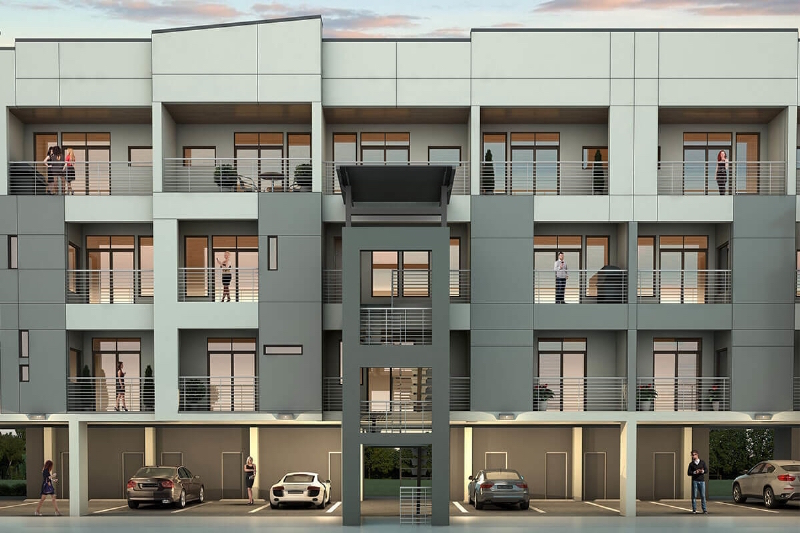The idea of micro condominiums, condos that are under 500 sf in size, is not new in densely populated cities such as New York or Tokyo, where sub-500-sf homes are not created to be hip and trendy, but, instead, are created out of necessity.
And while a city like Houston, and its population of just under 2.2 million certainly doesn’t categorize it as small, it also doesn’t make it a very dense city, either, especially when you take into account it is spread across 599.6 square miles (making it the ninth largest U.S. city by land area, ahead of New York, Los Angeles, and Chicago).
And yet, new home developer and builder Surge Homes has just announced its plans to deliver the first micro condos in Houston in 2017. The Hadley Building, part of the Parc at Midtown development, will include 14 micro condos among its total of 28 homes. The $21.6 million, 80-home community, Parc at Midtown, will mark the first Houston development with micro condos available for ownership.
All of the floor plans for Surge Homes’ micro condos will range from 414 sf to 498 sf. Although small, each condo will feature a closed master bedroom, space for entertaining in the living areas, and windows on the front and back exterior walls, providing a wealth of natural light.
While Houston may not be in need of micro condos, market research collected by Surge Homes of nearly 3,400 Houstonians gave some insight into the growing demand among Houston residents for these tiny homes. By being the first developer in Houston to offer micro condos, Surge Homes hopes to parlay its forward-thinking bet on these European-inspired floor plans into increased sales.
And they may already be seeing the payoff. The Parc at Midtown development, which features more traditionally sized homes, as well, has sold 55 percent of its homes in 120 days, making it the third fastest-selling residential subdivision in Houston for the first quarter of 2016, according to Meyers Research LLC.
 A typical Hadley Building condominium kitchen featuring optional integrated refrigerator. Image: PRNewsFoto/Surge Homes
A typical Hadley Building condominium kitchen featuring optional integrated refrigerator. Image: PRNewsFoto/Surge Homes
Related Stories
Transit Facilities | Dec 4, 2023
6 guideposts for cities to create equitable transit-oriented developments
Austin, Texas, has developed an ETOD Policy Toolkit Study to make transit-oriented developments more equitable for current and future residents and businesses.
Multifamily Housing | Nov 30, 2023
A lasting housing impact: Gen-Z redefines multifamily living
Nathan Casteel, Design Leader, DLR Group, details what sets an apartment community apart for younger generations.
Products and Materials | Nov 30, 2023
Top building products for November 2023
BD+C Editors break down 15 of the top building products this month, from horizontal sliding windows to discreet indoor air infusers.
Engineers | Nov 27, 2023
Kimley-Horn eliminates the guesswork of electric vehicle charger site selection
Private businesses and governments can now choose their new electric vehicle (EV) charger locations with data-driven precision. Kimley-Horn, the national engineering, planning, and design consulting firm, today launched TREDLite EV, a cloud-based tool that helps organizations develop and optimize their EV charger deployment strategies based on the organization’s unique priorities.
MFPRO+ Blog | Nov 27, 2023
7 ways multifamily designers can promote wellness in urban communities
Shepley Bulfinch's Natalie Shutt-Banks, AIA, identifies design elements that multifamily developers can use to maximize space while creating a positive impact on residents and the planet
MFPRO+ New Projects | Nov 21, 2023
An 'eco-obsessed' multifamily housing project takes advantage of downtown Austin’s small lots
In downtown Austin, Tex., architecture firm McKinney York says it built Capitol Quarters to be “eco-obsessed, not just eco-minded.” With airtight walls, better insulation, and super-efficient VRF (variable refrigerant flow) systems, Capitol Quarters uses 30% less energy than other living spaces in Austin, according to a statement from McKinney York.
MFPRO+ News | Nov 21, 2023
California building electrification laws could prompt more evictions and rent increases
California laws requiring apartment owners to ditch appliances that use fossil fuels could prompt more evictions and rent increases in the state, according to a report from the nonprofit Strategic Actions for a Just Economy. The law could spur more evictions if landlords undertake major renovations to comply with the electrification rule.
MFPRO+ News | Nov 21, 2023
Underused strip malls offer great potential for conversions to residential use
Replacing moribund strip malls with multifamily housing could make a notable dent in the housing shortage and revitalize under-used properties across the country, according to a report from housing nonprofit Enterprise Community Partners.
MFPRO+ News | Nov 21, 2023
Renters value amenities that support a mobile, connected lifestyle
Multifamily renters prioritize features and amenities that reflect a mobile, connected lifestyle, according to the National Multifamily Housing Council (NMHC) and Grace Hill 2024 Renter Preferences Survey.
Sustainability | Nov 20, 2023
8 strategies for multifamily passive house design projects
Stantec's Brett Lambert, Principal of Architecture and Passive House Certified Consultant, uses the Northland Newton Development project to guide designers with eight tips for designing multifamily passive house projects.

















